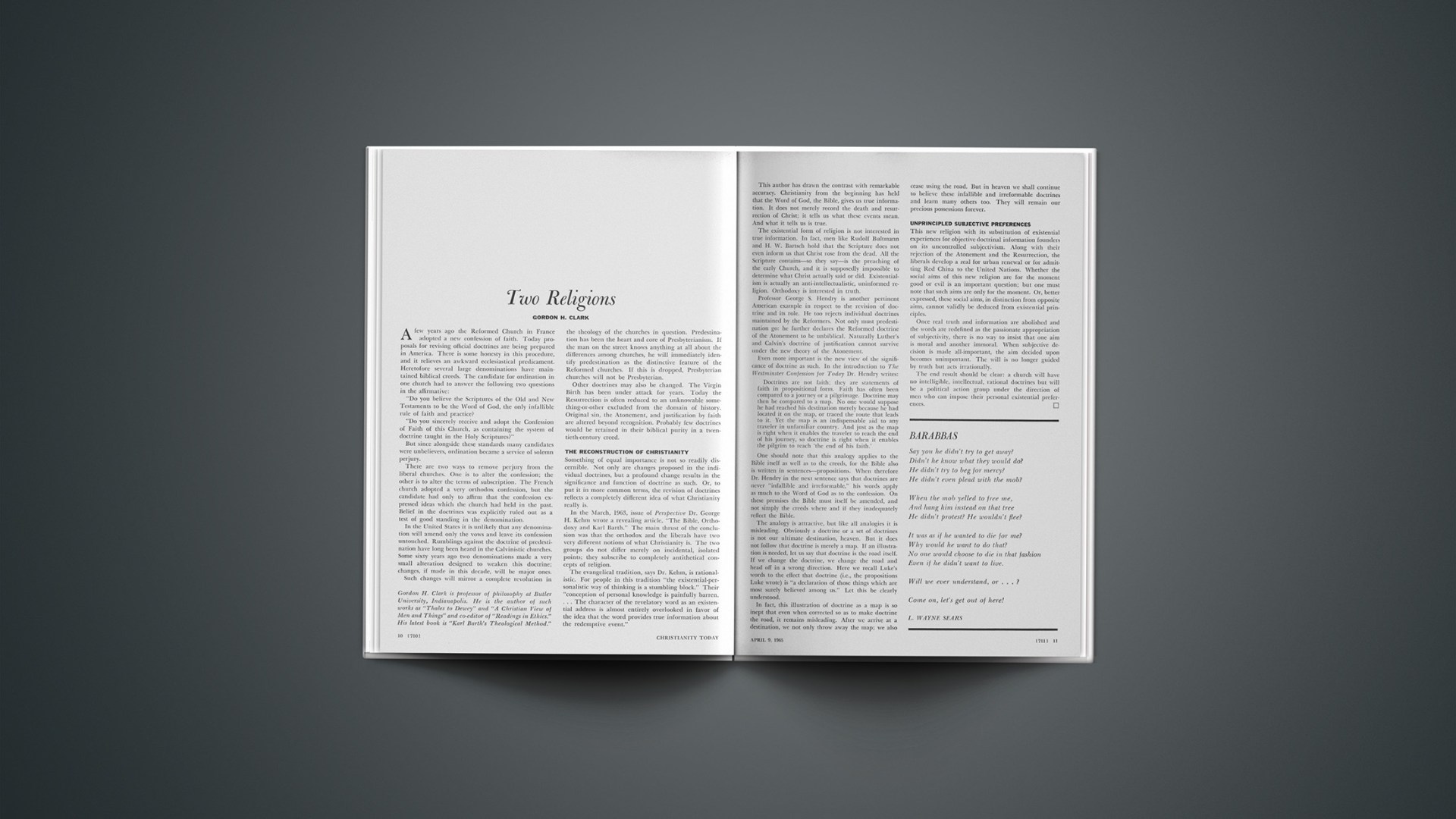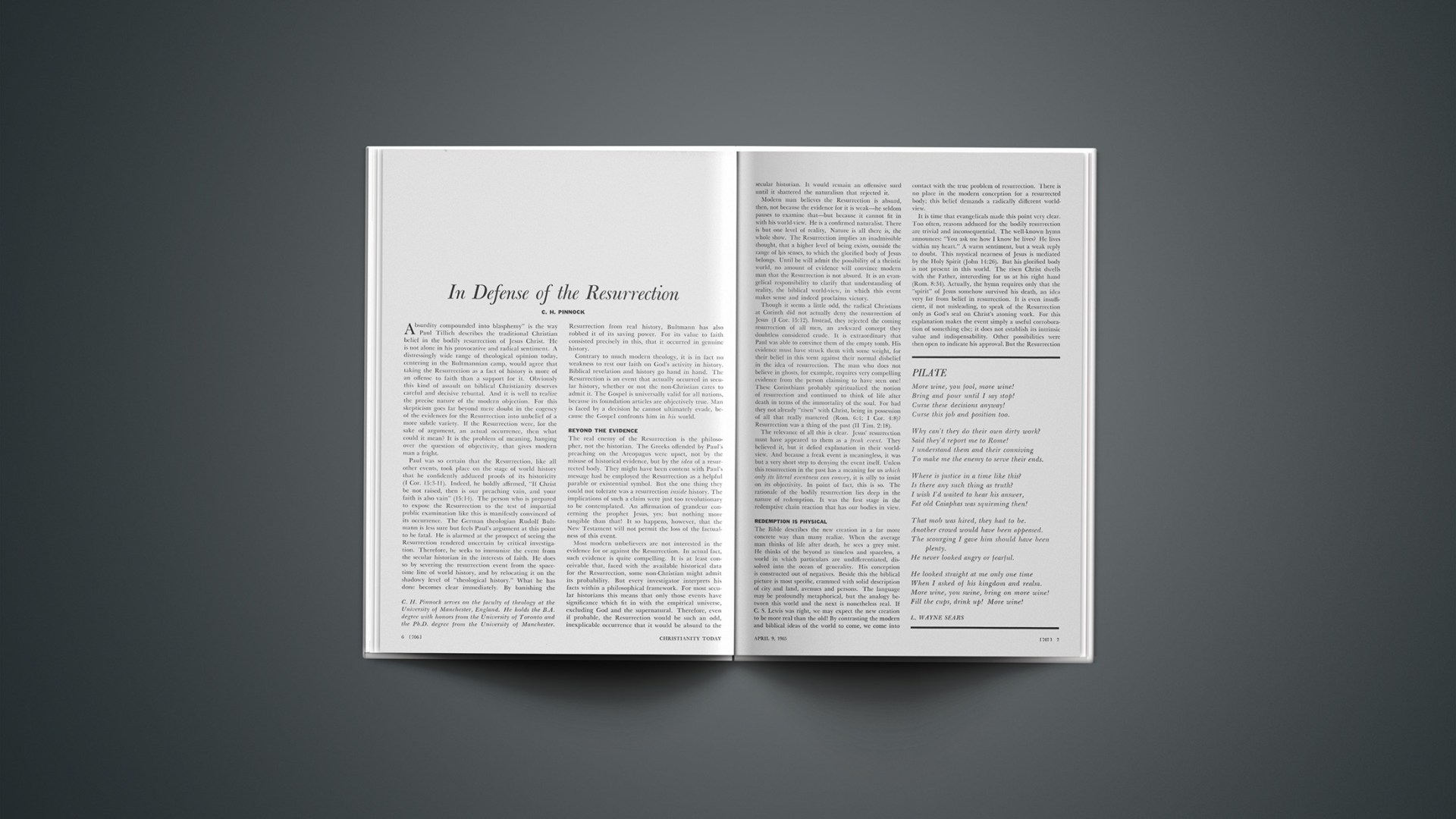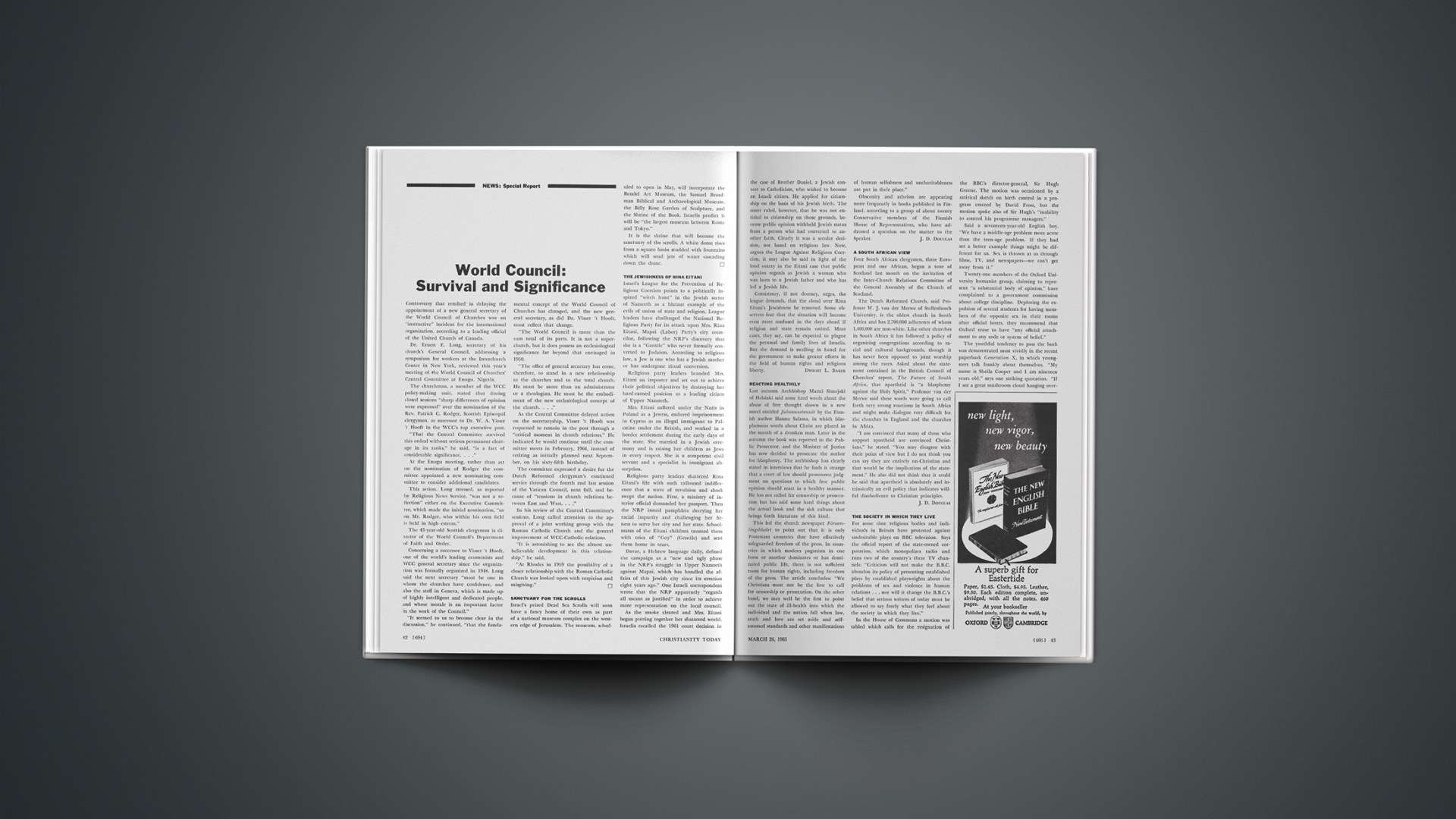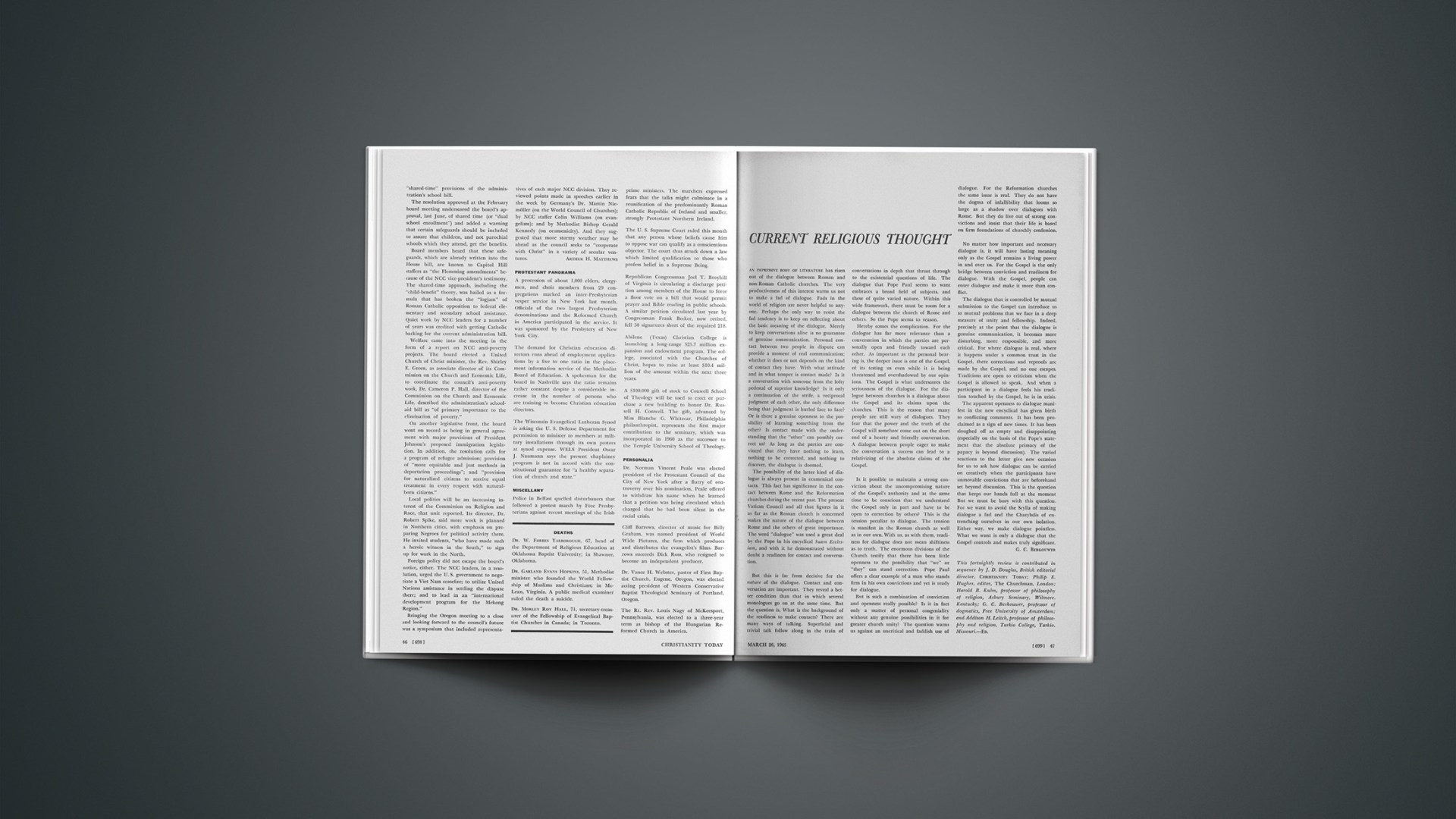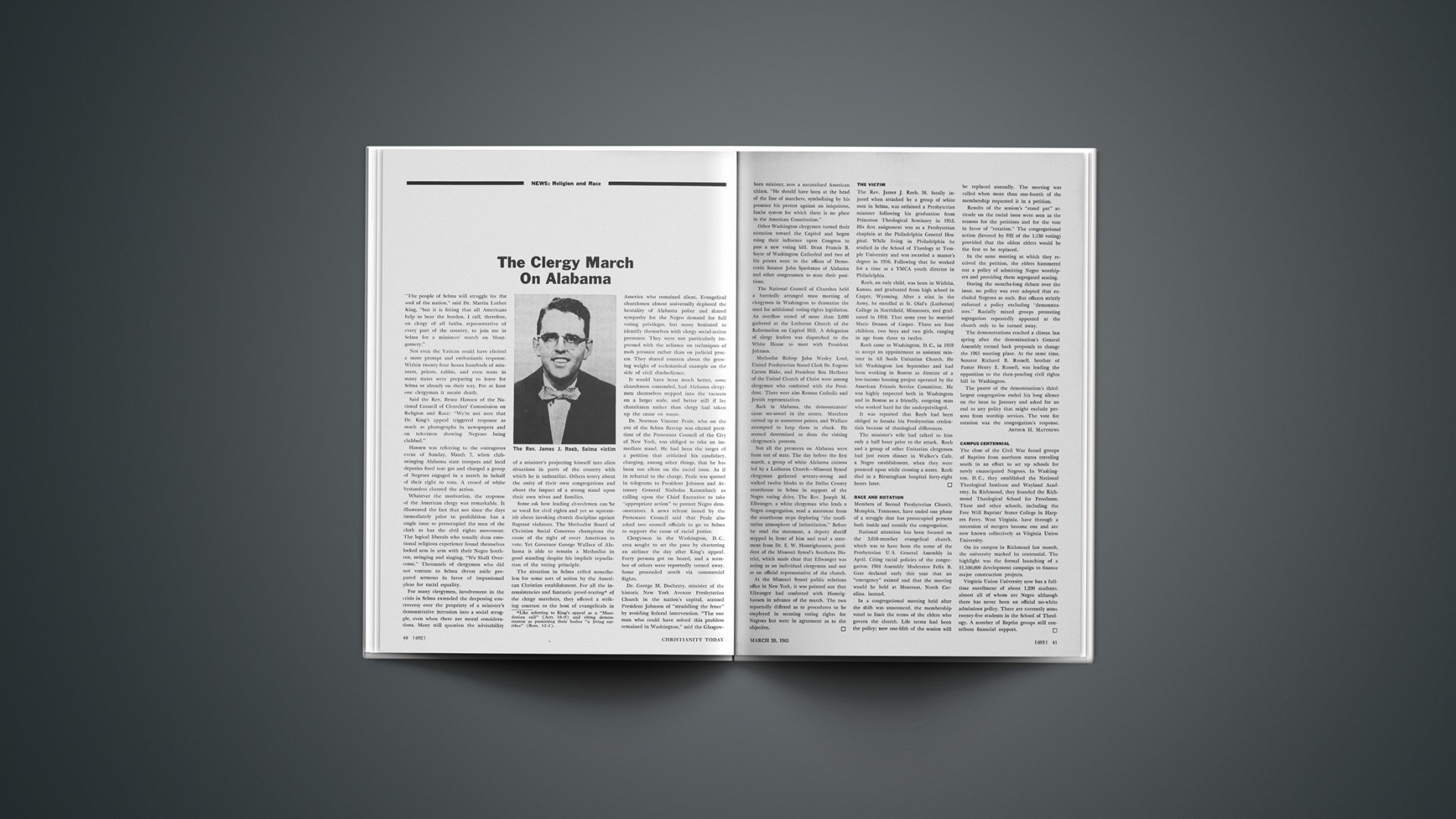A few years ago the Reformed Church in France adopted a new confession of faith. Today proposals for revising official doctrines are being prepared in America. There is some honesty in this procedure, and it relieves an awkward ecclesiastical predicament. Heretofore several large denominations have maintained biblical creeds. The candidate for ordination in one church had to answer the following two questions in the affirmative:
“Do you believe the Scriptures of the Old and New Testaments to be the Word of God, the only infallible rule of faith and practice?
“Do you sincerely receive and adopt the Confession of Faith of this Church, as containing the system of doctrine taught in the Holy Scriptures?”
But since alongside these standards many candidates were unbelievers, ordination became a service of solemn perjury.
There are two ways to remove perjury from the liberal churches. One is to alter the confession; the other is to alter the terms of subscription. The French church adopted a very orthodox confession, but the candidate had only to affirm that the confession expressed ideas which the church had held in the past. Belief in the doctrines was explicitly ruled out as a test of good standing in the denomination.
In the United States it is unlikely that any denomination will amend only the vows and leave its confession untouched. Rumblings against the doctrine of predestination have long been heard in the Calvinistic churches. Some sixty years ago two denominations made a very small alteration designed to weaken this doctrine; changes, if made in this decade, will be major ones.
Such changes will mirror a complete revolution in the theology of the churches in question. Predestination has been the heart and core of Presbyterianism. If the man on the street knows anything at all about the differences among churches, he will immediately identify predestination as the distinctive feature of the Reformed churches. If this is dropped, Presbyterian churches will not be Presbyterian.
Other doctrines may also be changed. The Virgin Birth has been under attack for years. Today the Resurrection is often reduced to an unknowable some-thing-or-other excluded from the domain of history. Original sin, the Atonement, and justification by faith are altered beyond recognition. Probably few doctrines would be retained in their biblical purity in a twentieth-century creed.
The Reconstruction Of Christianity
Something of equal importance is not so readily discernible. Not only are changes proposed in the individual doctrines, but a profound change results in the significance and function of doctrine as such. Or, to put it in more common terms, the revision of doctrines reflects a completely different idea of what Christianity really is.
In the March, 1963, issue of Perspective Dr. George H. Kehm wrote a revealing article, “The Bible, Orthodoxy and Karl Barth.” The main thrust of the conclusion was that the orthodox and the liberals have two very different notions of what Christianity is. The two groups do not differ merely on incidental, isolated points; they subscribe to completely antithetical concepts of religion.
The evangelical tradition, says Dr. Kehm, is rationalistic. For people in this tradition “the existential-personalistic way of thinking is a stumbling block.” Their “conception of personal knowledge is painfully barren.… The character of the revelatory word as an existential address is almost entirely overlooked in favor of the idea that the word provides true information about the redemptive event.”
This author has drawn the contrast with remarkable accuracy. Christianity from the beginning has held that the Word of God, the Bible, gives us true information. It does not merely record the death and resurrection of Christ; it tells us what these events mean. And what it tells us is true.
The existential form of religion is not interested in true information. In fact, men like Rudolf Bultmann and H. W. Bartsch hold that the Scripture docs not even inform us that Christ rose from the dead. All the Scripture contains—so they say—is the preaching of the early Church, and it is supposedly impossible to determine what Christ actually said or did. Existentialism is actually an anti-intellectualistic, uninformed religion. Orthodoxy is interested in truth.
Professor George S. Hendry is another pertinent American example in respect to the revision of doctrine and its role. He too rejects individual doctrines maintained by the Reformers. Not only must predestination go: he further declares the Reformed doctrine of the Atonement to be unbiblical. Naturally Luther’s and Calvin’s doctrine of justification cannot survive under the new theory of the Atonement.
Even more important is the new view of the significance of doctrine as such. In the introduction to The Westminster Confession for Today Dr. Hendry writes:
Doctrines are not faith; they are statements of faith in propositional form. Faith has often been compared to a journey or a pilgrimage. Doctrine may then be compared to a map. No one would suppose he had reached his destination merely because he had located it on the map, or traced the route that leads to it. Yet the map is an indispensable aid to any traveler in unfamiliar country. And just as the map is right when it enables the traveler to reach the end of his journey, so doctrine is right when it enables the pilgrim to reach ‘the end of his faith.’
One should note that this analogy applies to the Bible itself as well as to the creeds, for the Bible also is written in sentences—propositions. When therefore Dr. Hendry in the next sentence says that doctrines are never “infallible and irreformable,” his words apply as much to the Word of God as to the confession. On these premises the Bible must itself be amended, and not simply the creeds where and if they inadequately reflect the Bible.
The analogy is attractive, but like all analogies it is misleading. Obviously a doctrine or a set of doctrines is not our ultimate destination, heaven. But it does not follow that doctrine is merely a map. If an illustration is needed, let us say that doctrine is the road itself. If we change the doctrine, we change the road and head off in a wrong direction. Here we recall Luke’s words to the effect that doctrine (i.e., the propositions Luke wrote) is “a declaration of those things which are most surely believed among us.” Let this be clearly understood.
In fact, this illustration of doctrine as a map is so inept that even when corrected so as to make doctrine the road, it remains misleading. After we arrive at a destination, we not only throw away the map; we also cease using the road. But in heaven we shall continue to believe these infallible and irreformable doctrines and learn many others too. They will remain our precious possessions forever.
Unprincipled Subjective Preferences
This new religion with its substitution of existential experiences for objective doctrinal information founders on its uncontrolled subjectivism. Along with their rejection of the Atonement and the Resurrection, the liberals develop a zeal for urban renewal or for admitting Red China to the United Nations. Whether the social aims of this new religion are for the moment good or evil is an important question; but one must note that such aims are only for the moment. Or, better expressed, these social aims, in distinction from opposite aims, cannot validly be deduced from existential principles.
Once real truth and information are abolished and the words are redefined as the passionate appropriation of subjectivity, there is no way to insist that one aim is moral and another immoral. When subjective decision is made all-important, the aim decided upon becomes unimportant. The will is no longer guided by truth but acts irrationally.
The end result should be clear: a church will have no intelligible, intellectual, rational doctrines but will be a political action group under the direction of men who can impose their personal existential preferences.

